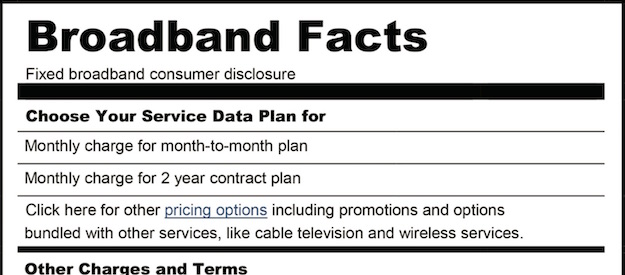By definition, competition requires market information. Internet service providers, like pretty much any business, have a natural tendency to want to reduce competition. So they make it very difficult to do comparison shopping. Try going to Comcast’s or AT&T’s website and get a fast and straight answer to a simple question: what’s the monthly price for a service package? It takes tenacity to get it, if it can be had at all. It’s one more way to protect a monopoly business from the perils of competition.
The Federal Communications Commission, to its credit, is trying to make the broadband market a bit more competitive by urging standardised labelling on the industry. Yesterday, it released its version of a consumer broadband label, with the recommendation that ISPs – wireline and mobile alike – prominently publish it on websites and in other marketing material. Deliberately similar to the standard ingredient labels on food, it lays out the monthly cost, the expected service level, data caps and other information in a clearly readable form.
Broadband providers aren’t exactly required to use it. When the FCC began regulating broadband as a common carrier service last year, it imposed transparency rules on big ISPs (but not mid-sized or small ones), without being specific about how to comply. When those new rules take full effect, the label template unveiled yesterday will be a safe harbor: if a company uses it and truthfully fills it out, then transparency obligations will be met. If a company tries another way, it might or might not stay out of trouble.
There’s no guarantee the FCC can convince big broadband companies to use a standard label, but if it does it will allow consumers to better use what market power they still have. It’s a big if. Expect a fierce rear guard action from lobbyists and lawyers with deep pockets.

